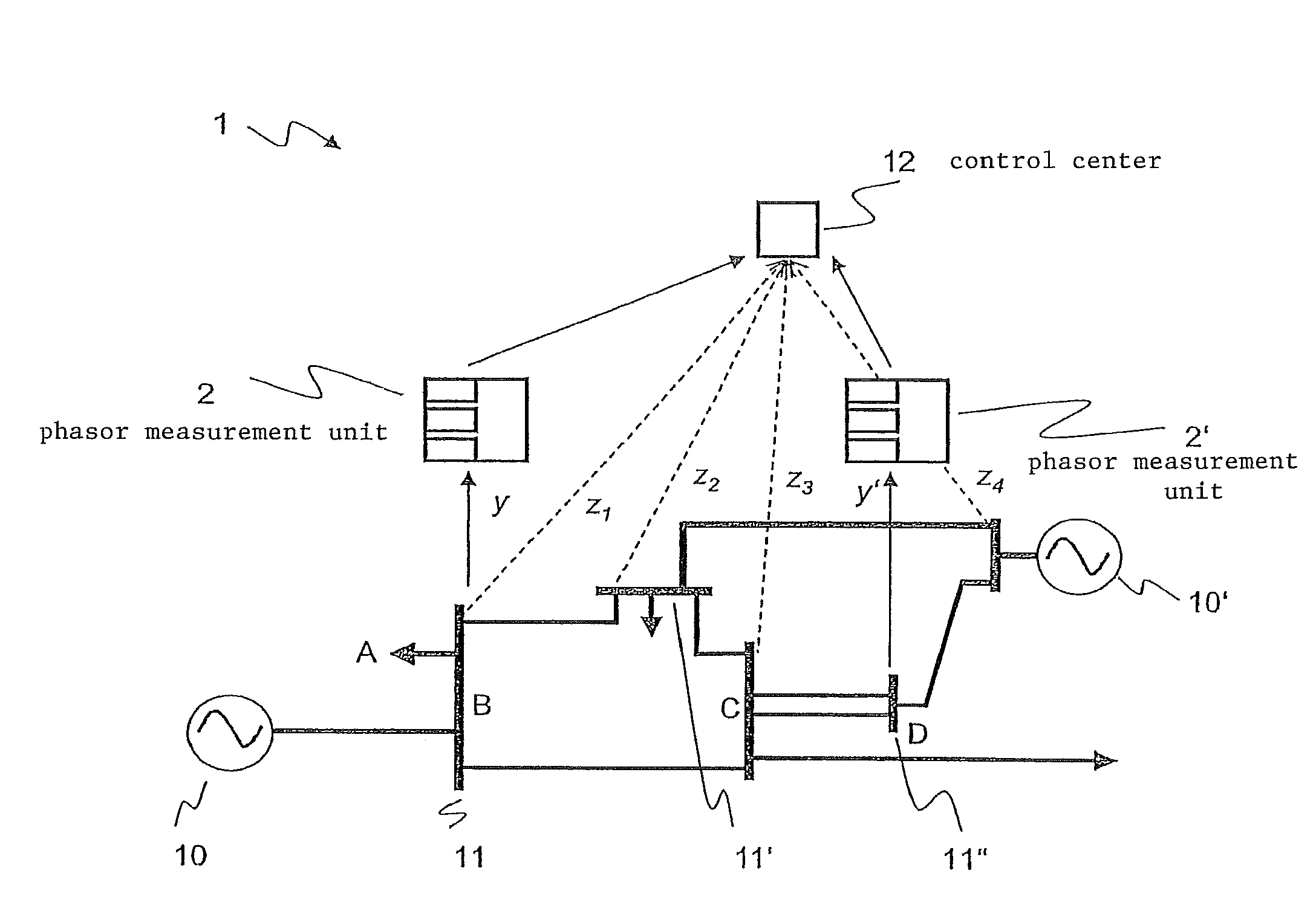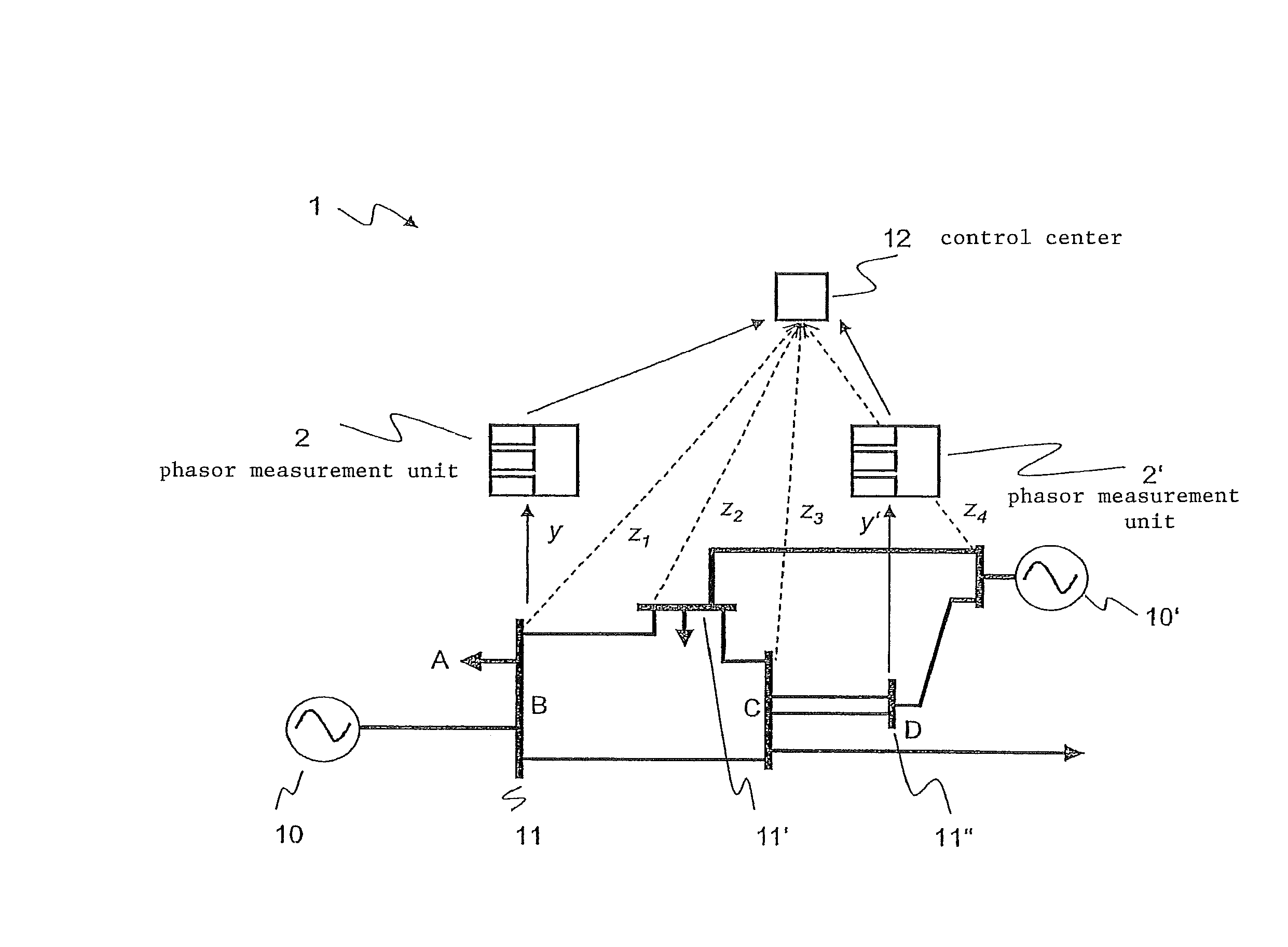Verifying an accuracy of a state estimation
a state estimation and accuracy technology, applied in non-electric variable control, process and machine control, instruments, etc., can solve problems such as the inability to obtain the least squares solution of such a nonlinear estimation problem iteratively, and introduce additional uncertainty in measurements, so as to reduce the operational security margin of a power system, increase the power transmittable, and reduce the effect of operational security margins
- Summary
- Abstract
- Description
- Claims
- Application Information
AI Technical Summary
Benefits of technology
Problems solved by technology
Method used
Image
Examples
Embodiment Construction
[0021]According to the disclosure, a check for basic accuracy or correctness of a conventional State Estimation (SE) procedure allows to increase a level of confidence in the results of the procedure. To this end, an accuracy of the estimated states is verified by comparing the latter with the results of independent phasor measurements performed at selected locations of the power system. Unless a discrepancy is reported by this comparison, the results of the SE can be assumed to be sufficiently accurate, and any conservative or additional security margin intended to compensate for SE uncertainty can be relaxed. Hence, established trustworthiness in the estimated states allows increasing the transmitted power where the estimated states do indicate such a possibility, i.e. in particular in fringe areas and / or transmission corridors between countries, and especially under stressed network conditions.
[0022]In an exemplary embodiment, phasor measurements from two or more PMUs located at ...
PUM
 Login to View More
Login to View More Abstract
Description
Claims
Application Information
 Login to View More
Login to View More - R&D
- Intellectual Property
- Life Sciences
- Materials
- Tech Scout
- Unparalleled Data Quality
- Higher Quality Content
- 60% Fewer Hallucinations
Browse by: Latest US Patents, China's latest patents, Technical Efficacy Thesaurus, Application Domain, Technology Topic, Popular Technical Reports.
© 2025 PatSnap. All rights reserved.Legal|Privacy policy|Modern Slavery Act Transparency Statement|Sitemap|About US| Contact US: help@patsnap.com


